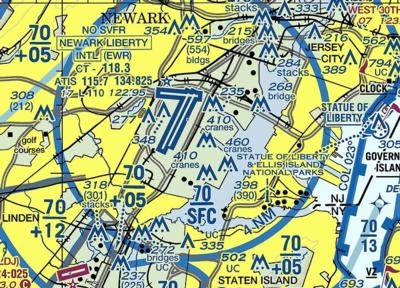Move Intended To Increase Access To Crowded Airspace
The FAA is opening up capacity at Newark Liberty International Airport (EWR) in time for the Winter 2016 scheduling season, a move that will increase access to the busiest airspace in the world.

Beginning on October 30, 2016, the FAA will designate EWR as a Level 2, schedule-facilitated airport under the International Air Transport Association (IATA) Worldwide Slot Guidelines. This will allow more efficient use of the airport terminal and runway capacity. Newark is currently designated as a Level 3, slot-controlled airport, which means that it is limited to 81 operations per hour.
The FAA placed temporary limits on scheduled operations at EWR in May of 2008 to mitigate congestion and delays at the airport. At that time, the agency was concerned about a spillover effect from the limited operations at John F. Kennedy International Airport (JFK) during the busy summer scheduling season.
The Port Authority is planning major runway reconstruction at JFK during 2017 and 2018, which will have an impact on overall runway capacity. With timing of upcoming construction in mind, the FAA continues to analyze scheduled demand, operational performance and potential capacity changes at JFK, including those resulting during and after major airfield enhancements are complete.
“The significant improvements in on-time performance and delays at Newark allowed us to make these changes,” said FAA Administrator Michael Huerta. "This change will improve access to some of the most in-demand airspace in the country and has the potential to provide more options for local consumers. We also recognize the demand for changes at JFK, and are open to considering capacity changes there when the planned runway construction is finished.”
Starting this month, the FAA is inviting schedule submissions from carriers for the Winter 2016 season. Airlines will separately need to obtain terminal space, gates and other facility access from the Port Authority of New York and New Jersey, the EWR airport operator. The FAA will work closely with the Port Authority and airlines to help facilitate synchronization of airport facility access and runway times for proposed schedules.
The FAA expects to see numerous benefits as a result of this change at EWR, including the following:
- More efficient use of existing airport terminal and runway capacity
- Increased access to EWR and the New York City area markets
- Market access and new entry for carriers and increased competition
- Allows consideration of retiming of existing flights to improve service offerings or to meet airlines’ operational or marketing needs
- Creates potential for retiming some flights out of the late night and early morning hours, thus reducing noise during these times
- More runway capacity available to carriers in cases previously denied under the current Level 3 slot controls.
Current analysis show significant improvements in on-time performance and delay metrics during peak periods of demand at EWR. For example, on-time gate arrivals at EWR have increased by about 11 percent when comparing May through August 2015 to the same period in 2007. On-time gate departures improved by approximately 3 percent. The mean arrival and departure delays are down by about 33 percent, and the delays greater than 60 minutes are down by 37 percent for arrivals and 38 percent for departures.
The FAA recently modeled the summer 2015 demand against summer 2015 runway capacity and then compared the results to the delay profile that was the basis for the 2008 Order. Operations in 2015 were down by 8 percent, total minutes of arrival delays went from 16,100 to 10,100 for a 37 percent decrease, mean arrival delays decreased from 24.0 minutes to 16.3 minutes, and mean departure delays from 18.0 minutes to 14.2 minutes.
The FAA determined that this change in designation at EWR will not cause a significant impact to noise and air emissions. A copy of the Notice involving Newark’s designation will be placed in Docket FAA-2008-0221.
(Source: FAA news release)
 ANN's Daily Aero-Term (05.05.24): Omnidirectional Approach Lighting System
ANN's Daily Aero-Term (05.05.24): Omnidirectional Approach Lighting System Aero-News: Quote of the Day (05.05.24)
Aero-News: Quote of the Day (05.05.24) Airborne 05.06.24: Gone West-Dick Rutan, ICON BK Update, SpaceX EVA Suit
Airborne 05.06.24: Gone West-Dick Rutan, ICON BK Update, SpaceX EVA Suit Airborne 05.03.24: Advanced Powerplant Solutions, PRA Runway Woes, Drone Racing
Airborne 05.03.24: Advanced Powerplant Solutions, PRA Runway Woes, Drone Racing Aero-News: Quote of the Day (05.06xx.24)
Aero-News: Quote of the Day (05.06xx.24)



